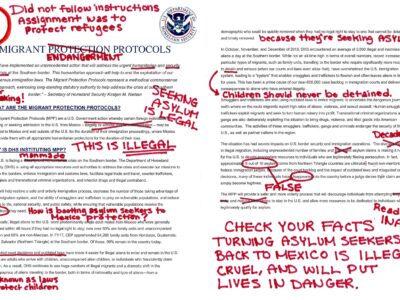Basics of Asylum
Authors: Geoffrey Louden and Christina Asencio | Read the factsheet
The United States has a long and proud history of allowing people to request asylum and providing refuge to victims of religious, political, ethnic, and other forms of persecution. This tradition reflects a core component of this country’s identity as a nation committed to freedom and respect for human dignity. The increasing displacement of people in the Western Hemisphere has led to higher numbers of individuals seeking asylum in the United States.
This Basics of Asylum fact sheet helps explain the refugee definition and the U.S. asylum process, discussing how:
- Asylum seekers can file an affirmative application for asylum with USCIS or a defensive application before an immigration judge;
- Asylum seekers are not required to be placed in expedited removal, a resource-intensive, due process deficient process;
- “Significant possibility” credible fear standard is intended to ensure access to asylum;
- “Reasonable possibility” screening standard conflicts with the fundamental protections of the 1951 Convention and elevates risk of refoulement;
- Asylum seekers must prove their credibility;
- Asylum applicants who otherwise meet the definition of a refugee can be barred or excluded from asylum; and
- Asylum applications are subject to multiple layers of anti-fraud and abuse protections.

